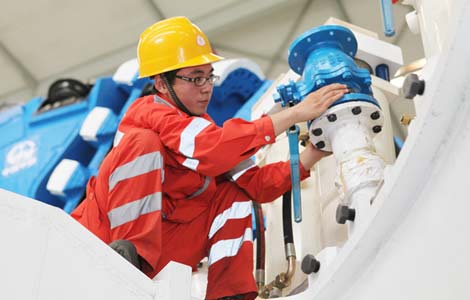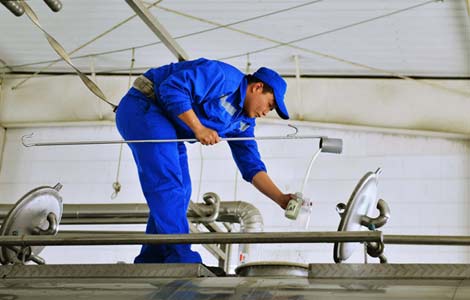Australia to develop world's fastest computer
Updated: 2013-06-21 15:14
(Xinhua)
|
||||||||
SYDNEY - Australian researchers have taken the next step in an incremental journey to developing the first large-scale quantum computer.
The world's potentially fastest computer system will be made up of tricky little building blocks called quantum bits, or qubits -- consisting of a single electron bound to a phosphorus atom.
Information is stored in the spin of each qubit electron, which can be moving in two directions at once. The qubits need to be placed with atomic precision, only a few nanometres apart, for the system to work.
Scientists have previously encountered difficulties in making qubits, placing them so close together, distinguishing individual qubits from their neighbours, and controlling their spin independently.
University of New South Wales (UNSW) researchers, who prefer to work with qubits in a silicon chip, have proposed a solution to each of these challenges, working with Sandia National Laboratories in New Mexico.
"It is a daunting challenge to rotate the spin of each qubit individually," said Holger Bch, lead author of the new study.
"But if each electron is hosted by a different number of phosphorus atoms, then the qubits will respond to different electromagnetic fields -- and each qubit can be distinguished from the others around it," he said.
The researchers say they are now one step closer to realising a practical, large-scale quantum computer -- the supercomputer of the future.
"This first demonstration that we can maintain long spin lifetimes of electrons on multi-donor systems is very powerful. It offers a new method for addressing individual qubits," said Michelle Simmons, UNSW Australian Centre of Excellence for Quantum Computation and Communication Technology director.
"This is an elegant and satisfying piece of work," she said.
Most Viewed
Editor's Picks

|

|

|

|

|

|
Today's Top News
China slams US human trafficking report
China urges resumption of six-party talks
SEC charges China-based firm with fraud
Bank of China denies monetary default report
Snowden's future hangs in balance
China reiterates support for the UN
Dairy measures start at source
June PMI signals weakness
US Weekly

|

|















